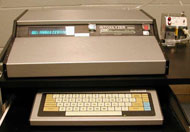1/8/2013
Pennsylvania: Judge Throws Out Breath Machine EvidenceCounty judge in Pennsylvania rejects breath test machine as inaccurate beyond a certain range.

A judge in Dauphin County, Pennsylvania last week delivered a bombshell decision finding evidence provided by breath machines to be inaccurate outside a narrow range. After hearing extensive testimony from expert witnesses, the Court of Common Pleas judge found it was not appropriate for charges of "high rate" driving under the influence of alcohol (DUI) be established by providing a printout from a machine displaying a high number.
"The unvarnished facts of this case ultimately establish that the array of breath testing devices presently utilized in this commonwealth, and in particular the Intoxilyzer 5000EN device manufactured by CMI, Inc., as those devices are presently field calibrated and utilized in this commonwealth, are not capable of providing a legally acceptable Blood Alcohol Content (BAC) reading, which is derived from a defendant's breath, outside of the limited linear dynamic range of 0.05 percent to 0.15 percent," Judge Lawrence F. Clark Jr. ruled.
In Pennsylvania, a separate "highest rate of alcohol" charge can be levied on a driver accused of having a BAC in excess of 0.16 percent. Enhanced penalties for this charge include a fine of up to $5000 for a first offense and a minimum three-day stay in jail. A third offense carries a minimum one-year jail sentence.
Testimony offered at the hearing showed the manufacturer of the Intoxilyzer failed to follow state rules requiring the solutions used to calibrate the breath machines be certified by an independent lab. CMI creates its own samples in-house, according to CMI engineer Brian T. Faulkner.
"As a result of the evidence produced at the hearing, it is now extremely questionable as to whether or not any DUI prosecution which utilizes a reading from an Intoxilyzer 5000EN breath testing device could presently withstand scrutiny based upon the startling testimony of the commonwealth's own witness, Mr. Faulkner, at the hearing," Judge Clark wrote.
Since the machine did not follow state regulations, there was no way the court could determine whether the initial calibration of the machine was completed in a scientific and accurate manner. Moreover, the machine is only checked against samples of 0.05, 0.10 and 0.15 percent.
"If you're calibrating from 0.05 to 0.15 and did these three points, you have the correlation coefficient, you've proven to me that your instrument works -- definitely works between 0.05 percent and 0.15 percent. There's no data to say that it works at 0.16 percent. There's no data to say it works at 0.04 percent," Lee N. Polite, an expert in organic chemistry, testified.
A copy of the decision is available in a 200k PDF file at the source link below.


